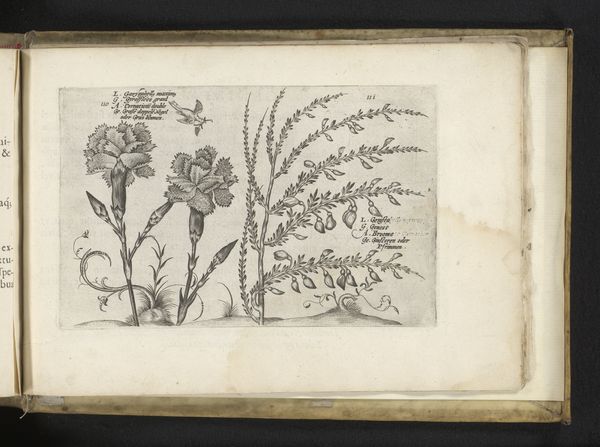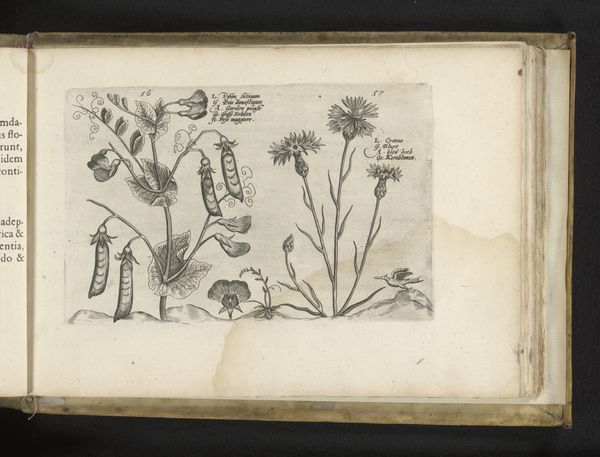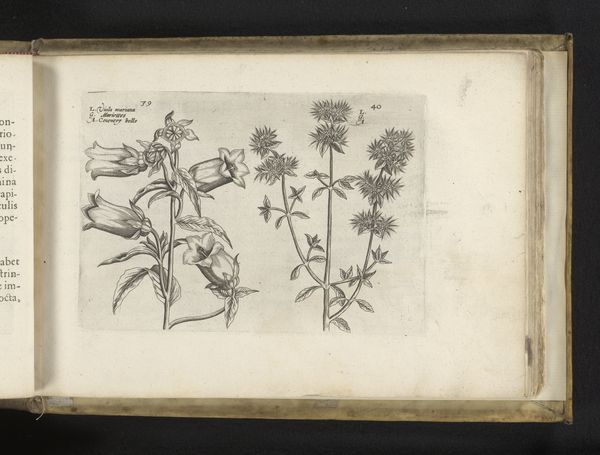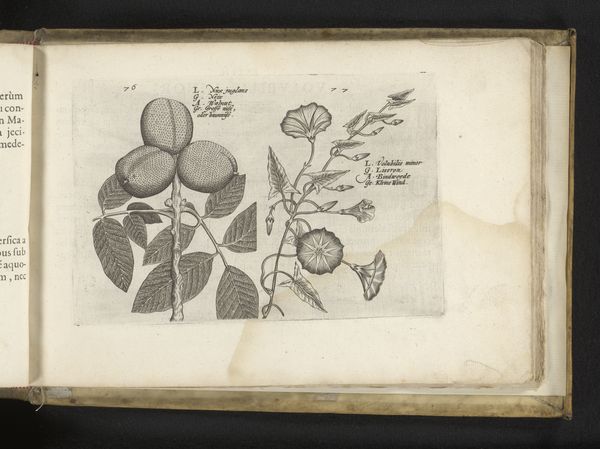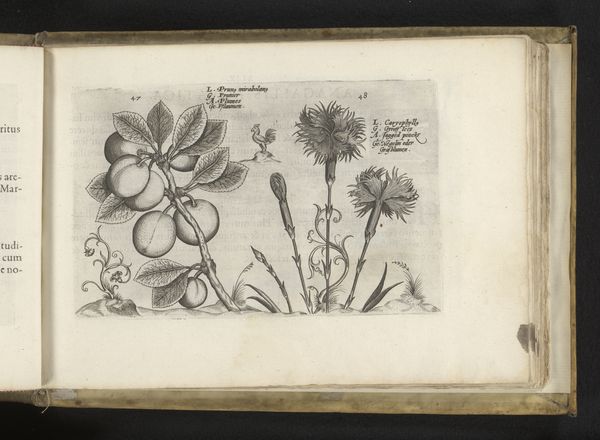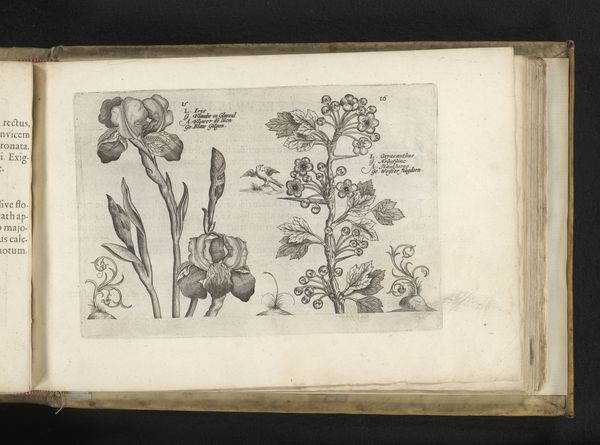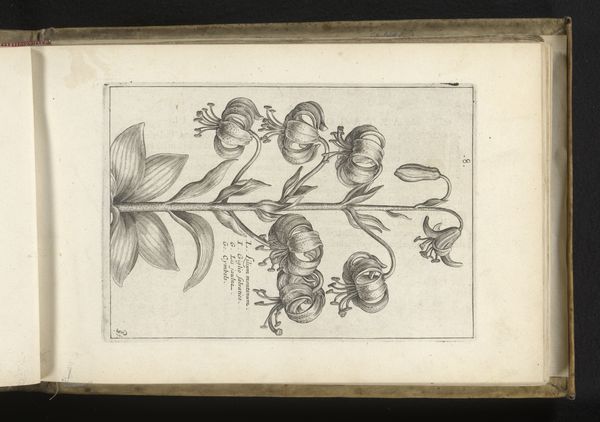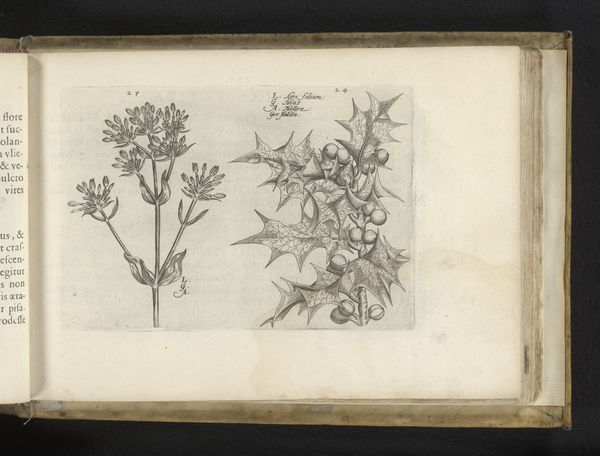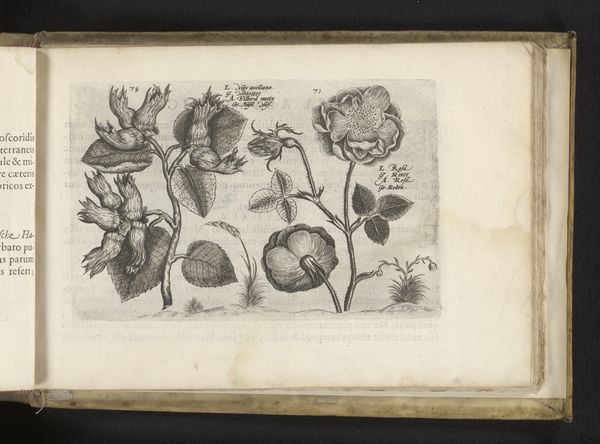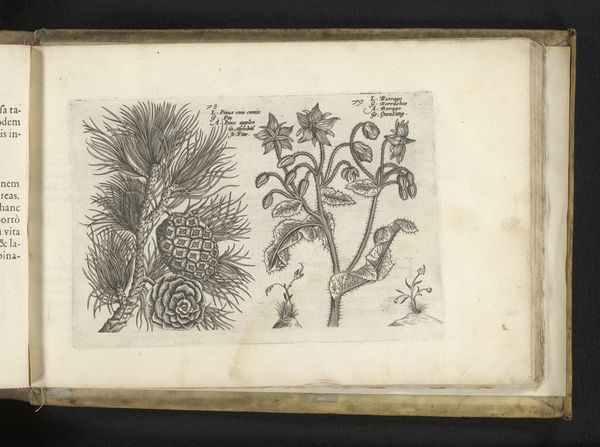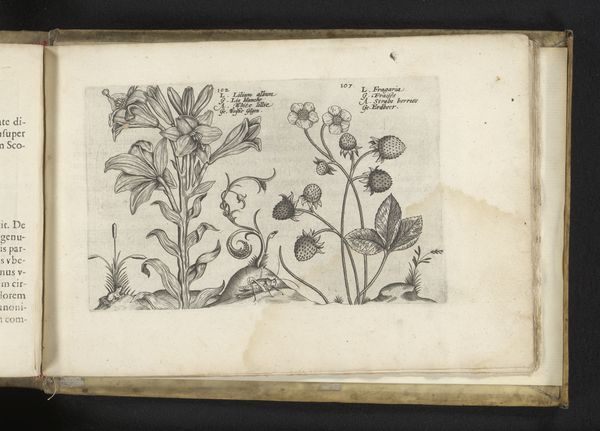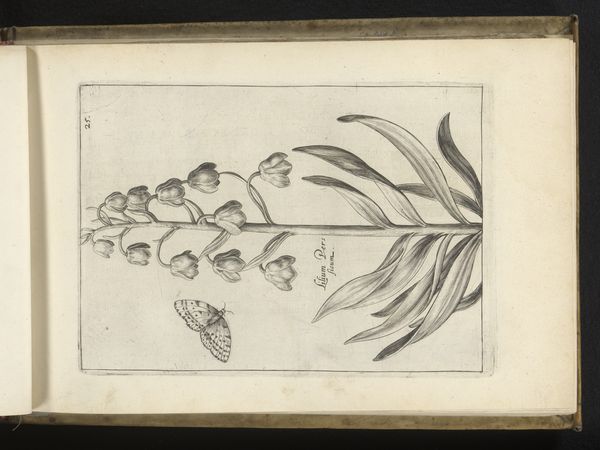
drawing, paper, ink
#
drawing
#
aged paper
#
toned paper
#
sketch book
#
flower
#
figuration
#
paper
#
personal sketchbook
#
ink
#
coloured pencil
#
pen-ink sketch
#
pen and pencil
#
pen work
#
sketchbook drawing
#
northern-renaissance
#
sketchbook art
#
realism
Dimensions: height 126 mm, width 197 mm
Copyright: Rijks Museum: Open Domain
This is a page with botanical illustrations, Vingerhoedskruid en blauwe monnikskap, made by Crispijn van de Passe the Younger in the 17th century. Look closely at the blue monkshood, or Aconitum. Its hooded flowers evoke a sense of concealment, a visual metaphor that whispers of the plant’s hidden danger, mirroring the cowl of a monk. This motif, though rendered in simple lines, echoes through time, recalling images of hermits and recluses. This visual association is no accident; the hood symbolizes both protection and secrecy. Consider how the silhouette of the monk’s hood has morphed through art history, from religious iconography to gothic romanticism, each era imbuing it with new layers of meaning. The image stirs a primeval response, a recognition of danger cloaked in beauty, a silent warning resonating from the depths of our collective memory. The power of symbols lies in their ability to tap into subconscious fears and desires, transcending time and culture.
Comments
No comments
Be the first to comment and join the conversation on the ultimate creative platform.
